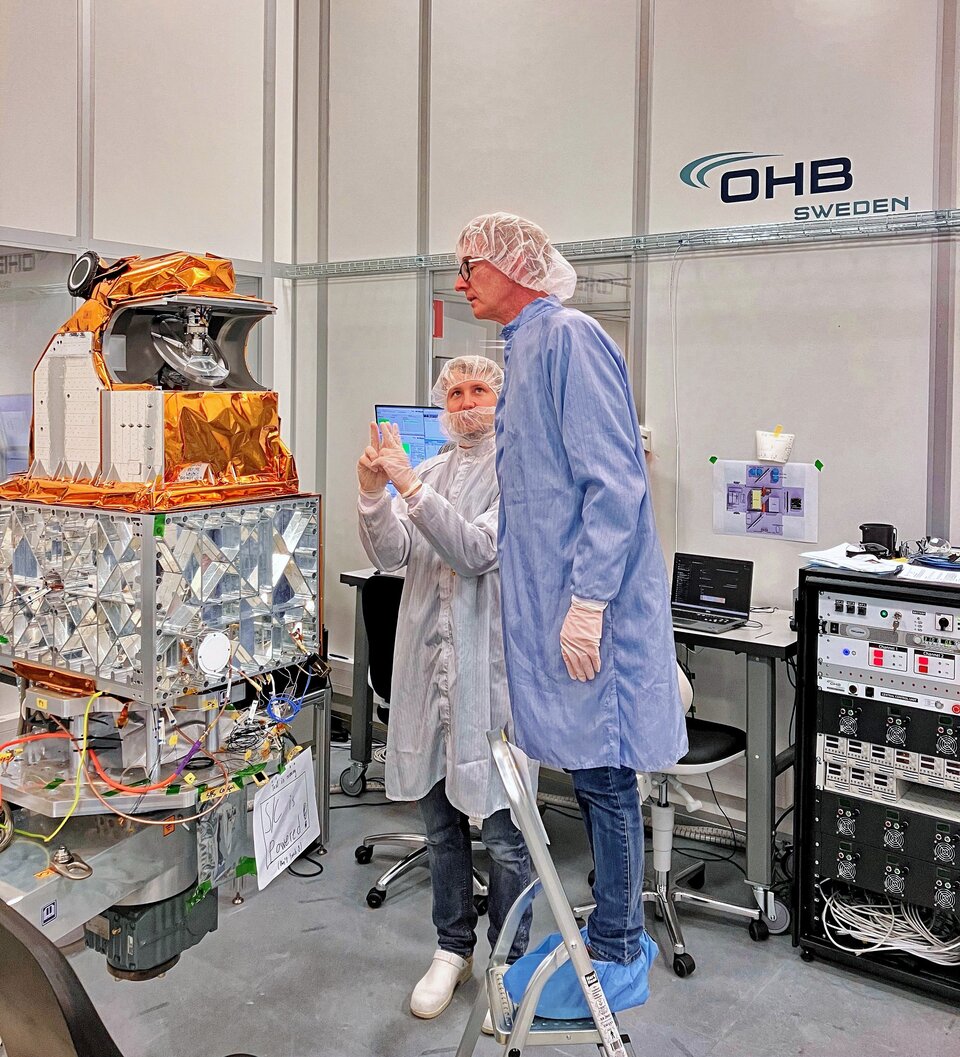
Only 36 months were required to develop and build ESA’s Arctic Weather Satellite (AWS). Now complete, this smallsat has been shipped from OHB in Sweden to Germany where the craft is starting a series of tests to make certain it will survive liftoff next year and subsequent life on-orbit.

As its name suggests, the new Arctic Weather Satellite mission is expected to improve weather forecasts in the Arctic – a region that currently lacks data for accurate short-term forecasts.
Today, satellites, both those in geostationary orbit and in polar orbit, provide a wealth of information that meteorologists use routinely to forecast the weather. However, the monitoring of the Arctic remains insufficient, as geostationary satellites have no visibility of this northerly region.
The Arctic Weather Satellite is actually the forerunner of a potential constellation of satellites, called EPS-Sterna, that ESA would build for Eumetsat if the first prototype Arctic Weather Satellite works well.
The EPS-Sterna mission is envisaged as a constellation of six microsatellites in three orbital planes to supply an almost constant stream of temperature and humidity data from every location on Earth. This would, for the first time, allow for very short-range weather forecasting, or ‘nowcasting’, in the Arctic. The set of six microsatellites would be replenished three times.
While the Arctic is the focus, meteorologists will also use the constellation to improve weather forecasts globally. Before this, however, the Arctic Weather Satellite prototype has to prove that it works. Hence, embracing the New Space approach by proving new concepts in a cost-effective and timely manner, this new satellite has been developed and built on a very tight schedule.
The satellite is now equipped with a 19-channel cross-track scanning microwave radiometer, which benefits from the heritage of the Microwave Sounder developed for the MetOp Second Generation satellites. The instrument will provide high-resolution humidity and temperature soundings of the atmosphere in all weather conditions.
These tests will include exposing the satellite to vibrations and noise during liftoff and the temperature differences in vacuum it will have to endure as it orbits Earth.
Once these tests have been completed, the satellite will be shipped back to OHB Sweden some final checks before it is shipped to SpaceX’s launch site at Vandenberg Space Force Base, California, in April of 2024. Liftoff is slated for June 1, 2024, on a Falcon 9 rocket.
“It has taken just 36 months from ESA awarding the industrial prime contract to OHB in Sweden and the satellite being completed. We are right on schedule. The instrument, a microwave radiometer, was delivered by Omnisys the prime contractor for the instrument to OHB in October and integrated on the satellite platform. And now, thanks to the dedication of the companies involved, we have a complete satellite. Passing another milestone this month, we also tested the links between the satellite and the mission control centre in KSAT, Tromsø in Norway, which all went according to plan. With these critical phases done, the satellite has been shipped to IABG in Germany for its environmental test campaign, which will last until February 2024.” — Ville Kangas, AWS Project Manager, ESA

